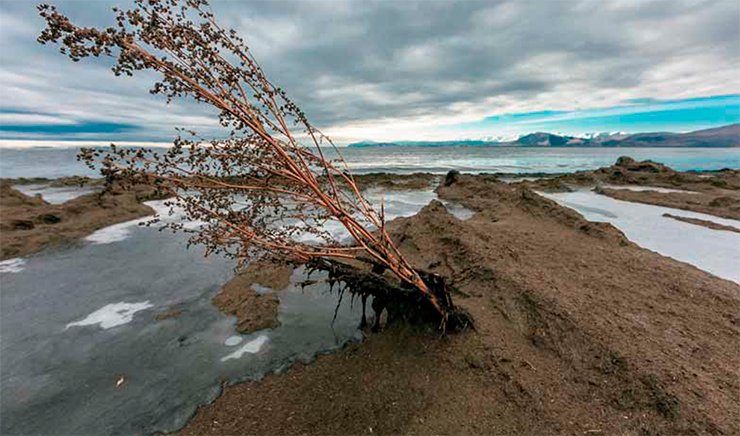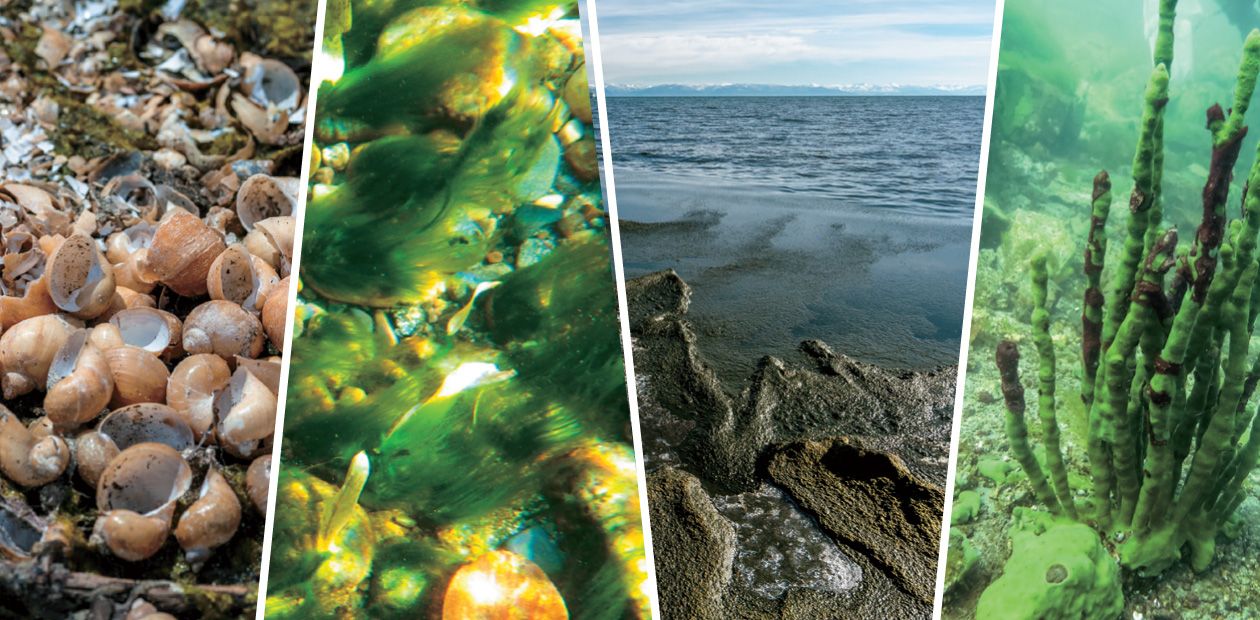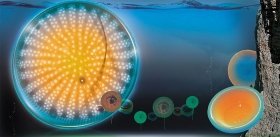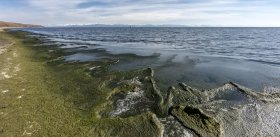Ecological Crisis on Lake Baikal: Diagnosed by Scientists
By Oleg A. Timoshkin, Valery V. Malnik, Maria V. Sakirko, and Christian Boedeker
Ecological crisis... A few years ago, one could not even imagine that these words would be written about Lake Baikal, the deepest and purest lake in the world, which is now on the UNESCO World Heritage list.
The first sign of the ecological crisis on Baikal was the rampant proliferation of the atypical filamentous Spirogyra alga. According to limnology scientists, the cause of the disaster was not global warming or other planetary-scale phenomena, but an excessive inflow of nutrients such as nitrogen and phosphorus into the lake. The studies revealed the culprit—the industrial and domestic wastewaters coming into the lake from ineffective or dilapidated wastewater treatment facilities located in coastal towns and the bilge and fecal waters from the numerous vessels.
So far these effects have been confined to the lake’s coastal zone and have not affected its deep part and, thus, the hydrochemical indicators of the Baikal water. However, the process does not stop, and untreated and poorly treated wastewater continues to flow, slowly but surely, into the sacred Baikal...
Huge stinking piles of rotting algae that stretch for hundreds of meters on the beaches; the shoreline studded with thousands of shells of dead snails; the bottom under a dense coat of green algal wisps; sponge bodies, ulcerated and covered with red spots; and finally, water that one cannot drink and where one cannot swim... A few years ago, it was impossible to even imagine that these lines would ever be written about Lake Baikal, the deepest and cleanest freshwater lake in the world and a home for rare animals and plants that are found nowhere else on our planet. According to limnology scientists, the cause of this ecological disaster is not global warming or other planetary-scale phenomena, but pollution with wastewater that contains excess nutrients. So far these effects have been confined to the lake’s coastal zone and have not affected its deep part and, thus, the hydrochemical indicators of the Baikal water. However, the process does not stop, and untreated and poorly treated wastewater and fecal sewage continue to flow, slowly but surely, into the sacred Baikal...
Will Baikal repeat the tragic fate of another marvel of nature—the Great Barrier Reef, whose coral cover has decreased over the last century by more than two-thirds due to long-term latent contamination? Are these negative environmental phenomena reversible? What must we do to let the future generations as well as us know the taste of pure Baikal water?

The events of recent decades show that unfortunately, people are not prudent hosts on this planet: anthropogenic pollution increases and environmental disasters are no longer a rarity. All this fully applies to lakes. During the last century, many of the world’s great lakes were severely polluted, including with heavy metals or nutrients, which cause the infamous “bloom” of water (rapid development of algae and cyanobacteria)... Continue reading













